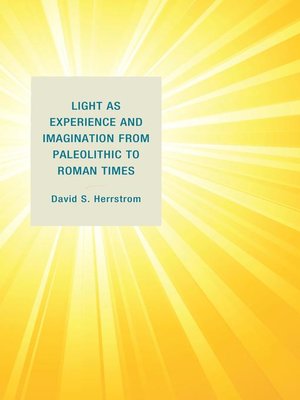
Sign up to save your library
With an OverDrive account, you can save your favorite libraries for at-a-glance information about availability. Find out more about OverDrive accounts.
Find this title in Libby, the library reading app by OverDrive.



Search for a digital library with this title
Title found at these libraries:
| Loading... |
This book is an interdisciplinary synthesis and interpretation about the experience of light as revealed in a wide range of art and literature from Paleolithic to Roman times. Humanistic in spirit and in its handling of facts, it marshals a substantial body of scholarship to develop an explication of light as a central, even dramatic, reality of human existence and experience in diverse cultural settings. David S. Herrstrom underscores our intimacy with light—not only its constant presence in our life but its insinuating character. Focusing on our encounters with light and ways of making sense of these, this book is concerned with the personal and cultural impact of light, exploring our resistance to and acceptance of light.
Its approach is unique. The book's true subject is the individual's relationship with light, rather than the investigation of light's essential nature. Ittells the story of light seducing individuals down through the ages. Consequently, it is not concerned with the "progress" of scientific inquiries into the physical properties and behavior of light (optical science), but rather with subjective reactions to it as reflected in art (Paleolithic through Roman), architecture (Egyptian, Grecian, Roman), mythology and religion (Paleolithic, Egyptian), and literature (e.g., Akhenaten, Plato, Aeschylus, Lucretius, John the Evangelist, Plotinus, and Augustine). This book celebrates the complexity of our relation to light's character. No individual experience of light is "truer" than any other; none improves on any previous experience of light's "tidal pull" on us. And the wondrous variety of these encounters has yielded a richly layered tapestry of human experience. By its broad scope and interdisciplinary approach, this pioneering book is without precedent.
Its approach is unique. The book's true subject is the individual's relationship with light, rather than the investigation of light's essential nature. Ittells the story of light seducing individuals down through the ages. Consequently, it is not concerned with the "progress" of scientific inquiries into the physical properties and behavior of light (optical science), but rather with subjective reactions to it as reflected in art (Paleolithic through Roman), architecture (Egyptian, Grecian, Roman), mythology and religion (Paleolithic, Egyptian), and literature (e.g., Akhenaten, Plato, Aeschylus, Lucretius, John the Evangelist, Plotinus, and Augustine). This book celebrates the complexity of our relation to light's character. No individual experience of light is "truer" than any other; none improves on any previous experience of light's "tidal pull" on us. And the wondrous variety of these encounters has yielded a richly layered tapestry of human experience. By its broad scope and interdisciplinary approach, this pioneering book is without precedent.







